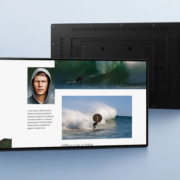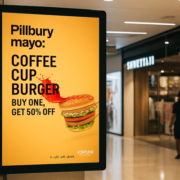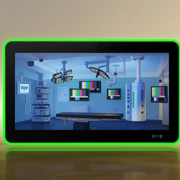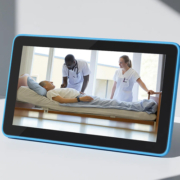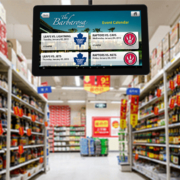What is a Digital Signage Player?
A digital signage player is a specialized hardware or software device that delivers multimedia content—such as videos, images, animations, and text—to digital displays. It acts as the brain behind the screen, powering dynamic and scheduled content playback across various industries like retail, hospitality, transportation, education, and corporate environments.
Whether integrated into a smart tablet, embedded in a media box, or running as a software app on a smart display, the digital signage player ensures that your digital content is displayed smoothly, reliably, and on schedule.
Key Functions of a Digital Signage Player
-
Content Playback
It plays digital media such as videos, images, HTML5 content, or scrolling messages based on a preset schedule or trigger. -
Content Scheduling
Most signage players allow you to schedule content to change by time of day, week, location, or user interaction. -
Remote Content Management
Modern players connect to a CMS (Content Management System), enabling remote updates over the internet via Wi-Fi, LAN, or cloud. -
Multi-Zone Display Management
A single screen can be divided into zones (e.g., video, ticker, weather widget) controlled independently by the player. -
Offline Operation
Some players support USB or SD card playback, allowing offline functionality in environments without network access. -
Integration with Sensors/Inputs
Advanced players can respond to touch inputs, barcode scanners, RFID, motion sensors, or cameras—enabling interactive experiences.
Types of Digital Signage Players
| Type | Description |
|---|---|
| Hardware Media Players | Dedicated boxes connected to a display, usually with HDMI output. Powerful and often fanless. |
| Integrated Players (Smart Displays) | Built into commercial tablets or smart TVs. Ideal for streamlined deployments. |
| OPS Players | Slot-in modules used with OPS-compatible displays in enterprise environments. |
| Software Players | Apps that run on Android, Windows, or Linux-based systems like tablets or mini PCs. |
What Features Should You Look For?
When choosing a digital signage player, consider the following features based on your project needs:
- Processor performance (e.g., RK3566 / RK3568 / Intel / Snapdragon)
- Operating system (Android / Linux / Windows)
- Storage (Flash/eMMC for local caching)
- Network options (Wi-Fi, Ethernet, PoE, 4G/5G)
- Compatibility with CMS platforms
- Touch input and peripheral integration (NFC, cameras, barcode scanners)
Common Use Cases
| Industry | Use Case |
|---|---|
| Retail | Display promotions, price updates, product videos |
| Hospitality | Interactive concierge, room directories |
| Education | Campus communication, digital bulletin boards |
| Healthcare | Patient check-in, waiting room updates |
| Transportation | Real-time schedules, emergency alerts |
| Corporate | Internal communications, dashboards, meeting room booking |
Portworld Digital Signage Player Solutions
Portworld offers a range of integrated digital signage solutions combining player and display in one compact unit:
- YC-215OB (32″) – Optical bonding touch screen tablet with Android 11 and PoE
- YC-L156 (15.6″) – RGB LED-framed signage panel with Android/Linux OS
- YC-2701T (27″) – Full HD POS signage tablet with 10-point touch
- YC-3201T (32″) – Industrial signage display with long-term 24/7 durability
Each product features:
- Built-in RK3566/RK3568 processors
- Wi-Fi + Bluetooth + RJ45 connectivity
- USB/SD content playback
- Compatible with CMS platforms or customizable software
- OEM/ODM and CKD/SKD manufacturing support
A digital signage player is a vital component of any modern display system. It determines how efficiently, securely, and professionally your content is delivered. Whether you’re building a simple screen for ads or a complex network of interactive terminals, choosing the right player is critical to success.

